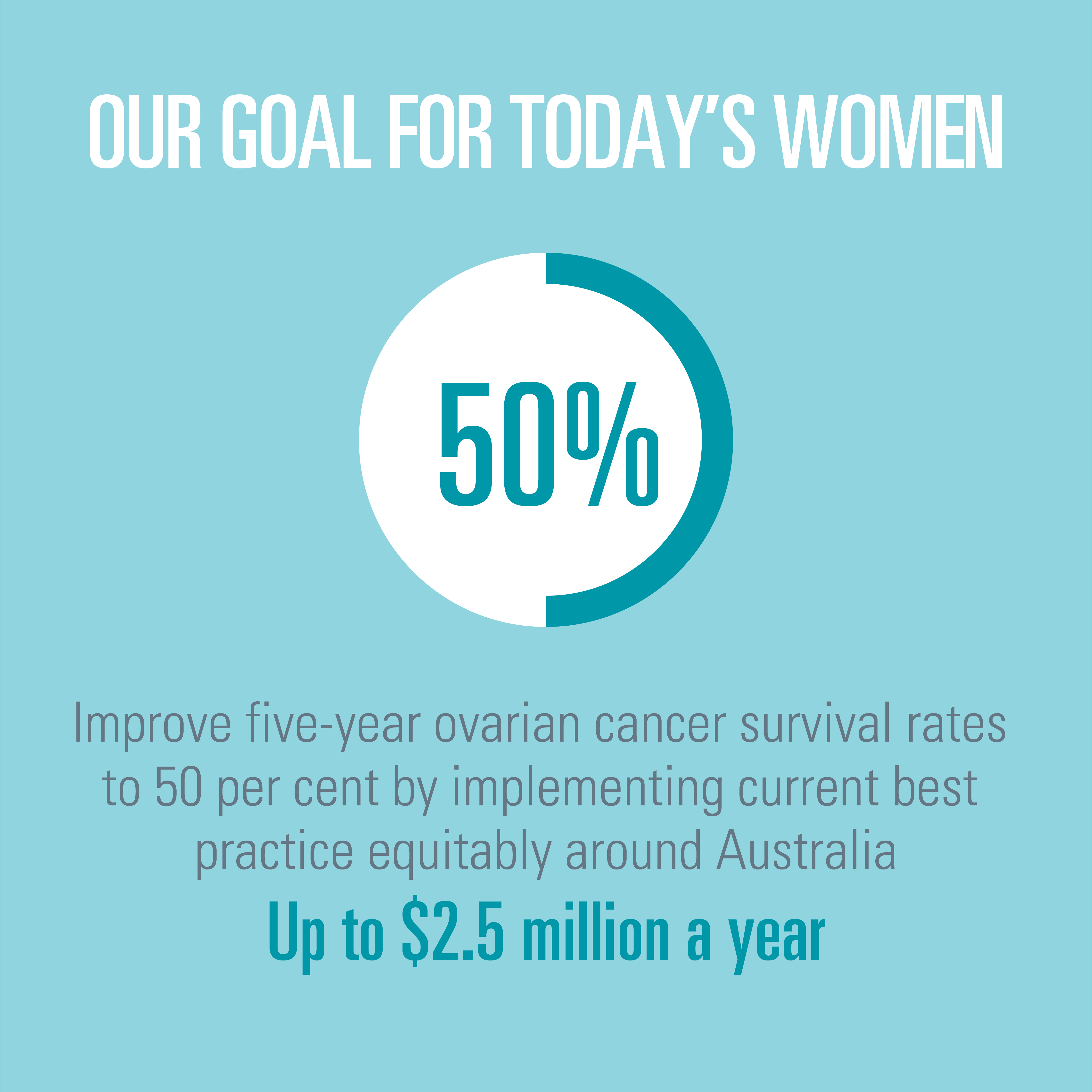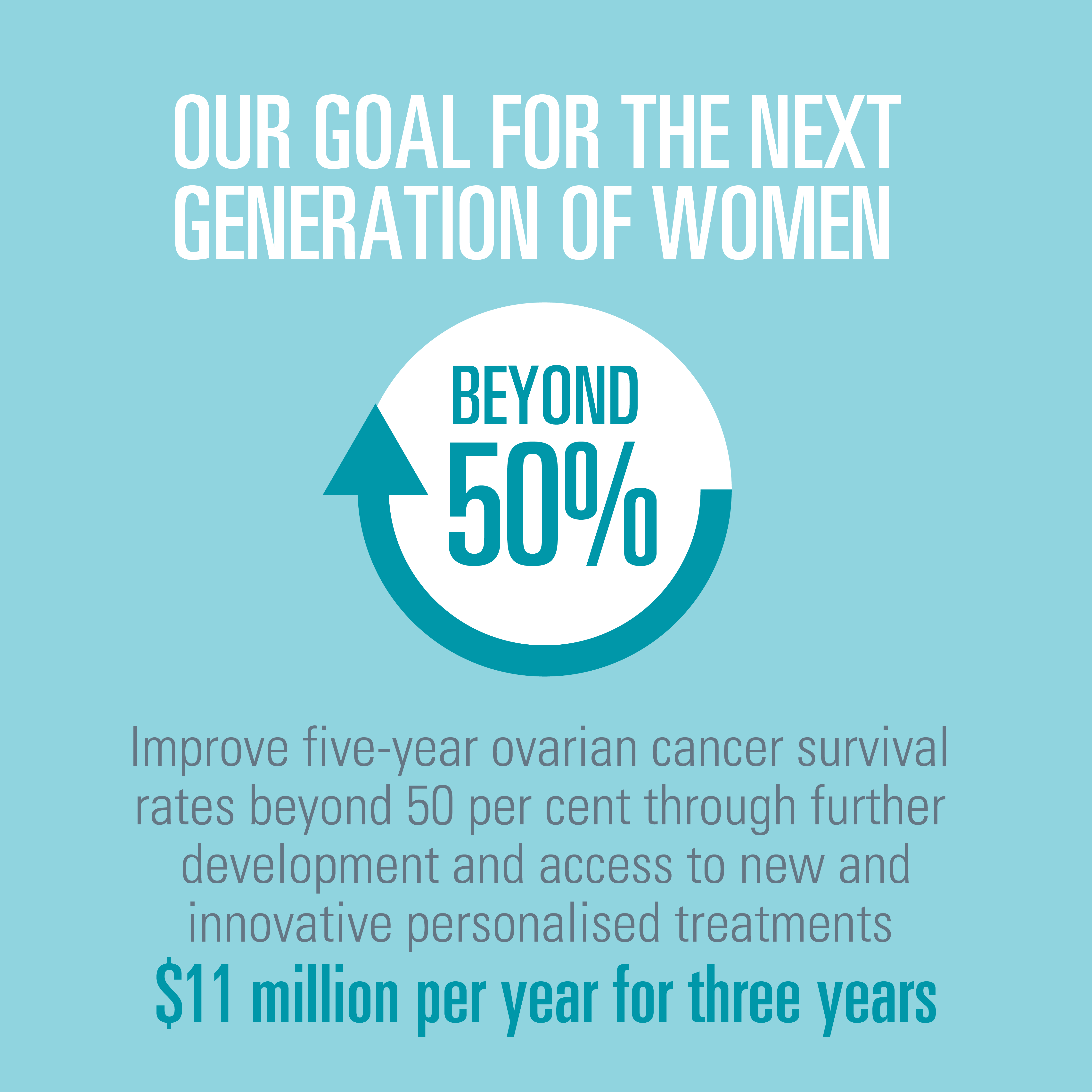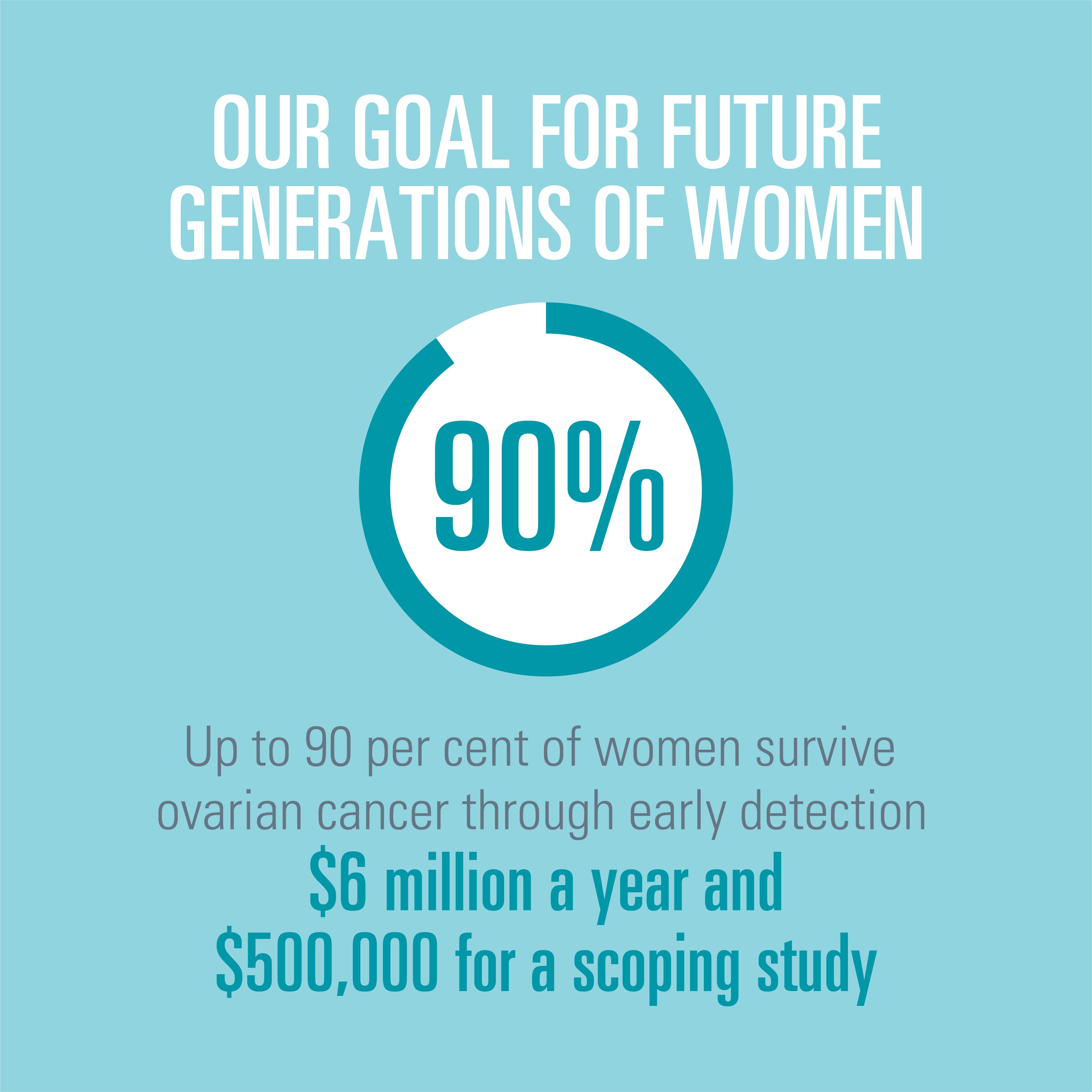
$2.5m for clinical best practice

$11m to improve treatment

$6m for early detection
Based on what the State of the Nation report found, we have set out a vision for a future where women live without ovarian cancer. It starts with an improvement in survival outcomes over the short to medium term, whilst investing in new methods for early detection and diagnosis for the next generation of women.
These are ambitious but achievable goals. To reach them, we need funding for a strategic, high impact program of research, supported by collaboration between governments, researchers, and the wider community.
We need:
- A national approach to clinical best practice. While the national 5- year survival rate is 46 per cent, currently each state and territory in Australia has a different approach to treating ovarian cancer and some states have reported 5-year survival rates above 50 per cent. We need to quickly establish a best practice approach nationally, reduce variation in care, expand awareness of ovarian cancer risk and uptake of preventative surgery by high-risk women.
- A greater understanding of what causes the disease and its fundamental biology. Importantly, this includes funding research to better understand disease progression.
- More research into treatment options. We need to invest in the development of precision medicine capabilities in ovarian cancer and better understanding of how to best prevent disease recurrence.
- More funding allocated to early detection research. We need a way to identify early indicators of ovarian cancer more clearly, particularly among those at high risk.
- More funding allocated to prevention research. We need to better understand the role of lifestyle and environmental factors in ovarian cancer development so that we can start to prevent the disease before it occurs.

I want to know what hope I can give my daughter… I share lots of things with her, and unfortunately, I’ve shared these cancer genes with her. I want to know what will be available for our daughters. We need to keep all of the mothers around as long as we can, but that’s what keeps me going, what gives me hope… that we can make things different for our daughters.”
- Ovarian cancer patient
Who funds research now?
Within Australia the Federal Government has been the major funder of ovarian cancer research, accounting for approximately 60 per cent of all Australian funding from 2010 to 2020.
After the Federal Government, the Ovarian Cancer Research Foundation (OCRF) has been the largest funder of ovarian cancer research in Australia and New Zealand, accounting for 10 per cent of all funding across all phases of research between 2010 and 2020. Since 2010, the OCRF has funded more than $17 million in ovarian cancer research, and more than $25 million since it was founded 20 years ago.
Average annual funding for ovarian cancer research, by funder:
 Source: State of the Nation in Ovarian Cancer: Research Audit
Source: State of the Nation in Ovarian Cancer: Research Audit
Where is funding currently spent?
The State of the Nation report found that the majority of ovarian cancer research funding over the past decade has been allocated to understanding the biology of the disease and seeking to develop new treatments.
Research into early detection has received just 7% of all research funding,
The OCRF is the major funder of research into early detection and diagnosis in Australia, accounting for 49 per cent of funding into this phase of work across all funders, with the balance coming from the NGO sector (32 per cent) and the Australian Government’s recent commitment to early detection and screening through the Medical Research Future Fund program, boosting its share to 19 per cent.
If we want to achieve the same improvements in survival in ovarian cancer that have been seen for so many cancers; if we want to see the major breakthroughs in early detection and prevention that have been realised in breast cancer and cervical cancer, then we must close this gap over the next 10-15 years.
We surveyed researchers, those living with ovarian cancer, and clinicians, and they overwhelmingly agreed on three things:
Can you help?
Are you someone who can make a significant contribution to achieving our goals, helping us to improve ovarian cancer survival rates for women today, and for future generations of women and girls?
Our Philanthropy Manager, Georgie Herbert, would love to discuss the impact your funding will have on finding an early detection test, improving treatments ultimately preventing the disease.
Please contact Georgie on 0407 326 603 or georgie.herbert@ocrf.com.au for more information.
Get in touch
THE OCRF WILL CONTINUE TO FUND INNOVATIVE RESEARCH WHICH ALIGNS WITH THESE FUNDING PRIORITIES
See our research strategy